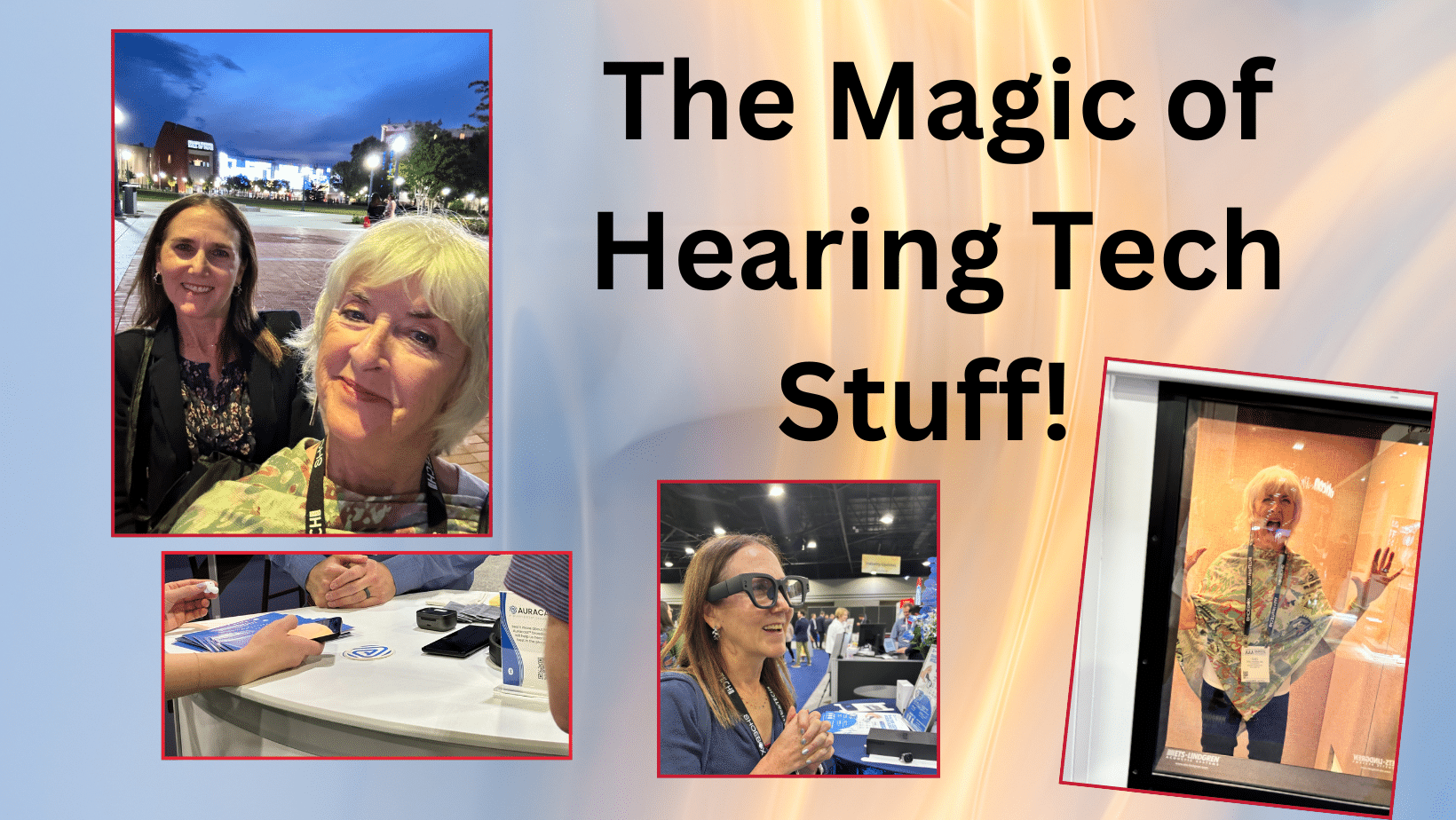As a person with hearing loss, I use a great deal of assistive technology. Hearing aids, cochlear implants, text translation such as captions and speech-to-text, TV streamers, remote microphones, etc., etc., etc.!
This doesn’t mean that I understand how the technology works. High science and math are involved, and any engineer-designed item that requires creative thinking on my part to open or operate, often requires help from the Hearing Husband or anyone else in my immediate vicinity. My brain simply doesn’t work that way.
But it’s not my job to understand how hearing technology works. My job is to understand that I need this stuff and to use it. But first, I must find out about it, and that can be a challenge if our hearing care professionals don’t tell us about these life-changing devices and systems.
Last week, my co-author and gal pal Shari Eberts and I attended the annual convention of the American Academy of Audiology to present the patient (client) perspective to interested members of the hearing care industry. AAA is arguably the premier event of its kind in the world, and the exhibit hall was big, busy, and exciting. (Also, very noisy and tinnitus-spiking.)
While many exhibitor products were aimed at the clinical audiologist (think, hearing testing booths, payroll systems, and insurance companies), several products got us pumped up for what’s coming in the near, or not-too-distant future. Here are a few examples.
Captioned Glasses: these readers caption the words of the person in front of you. Fabulous idea, but in our opinion, the product is not quite there yet. The paragraph of captions appeared over the lower half of the speaker’s face, making it difficult to speechread. My attention was solely on the text and not the person. However, once these glasses are improved, I can think of many benefits, including movies and theatre performances and one-on-one conversations.
As a Canadian and because it’s not available in my country, I drooled over the concept of smartphone conversations captioned by CART providers, such as those offered by Innocaption, where you see both sides of the conversation. Of course, part of the attraction is that in the US, it’s a free service, funded by the FCC. Can’t argue with that perk.
Auracast is the Super-Exciting Thing Coming Down the Pipe! Those of us who love our telecoil and hearing loops now, will passionately embrace this life-changing accessibility. When it arrives, is perfected, and is widely operational, users with Auracast-enabled hearing devices will be able to tap into broadcasts such as televisions in public places, educational and worship settings and – OMG, get this – public address announcements in airports! There are translation applications to Auracast at conferences and the signal is shareable with friends.
Just thinking about the positive, potential impact of these new technologies on my life makes me smile with hope. I don’t know the science that makes any of them work, but I’m pretty sure it has something do to with magic. Which makes me very grateful for the people who dream these possibilities and then make them real.






